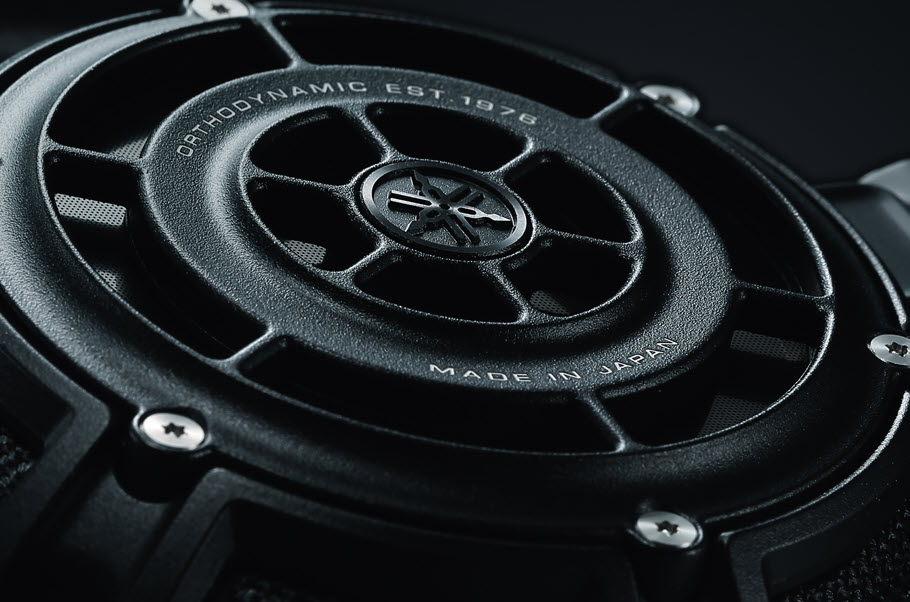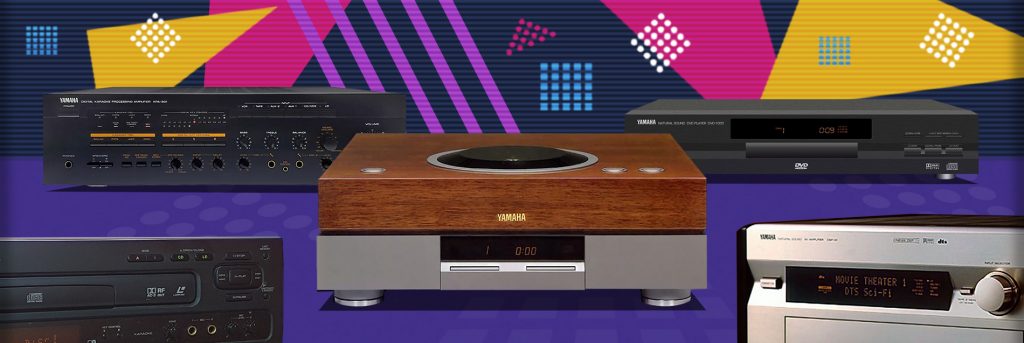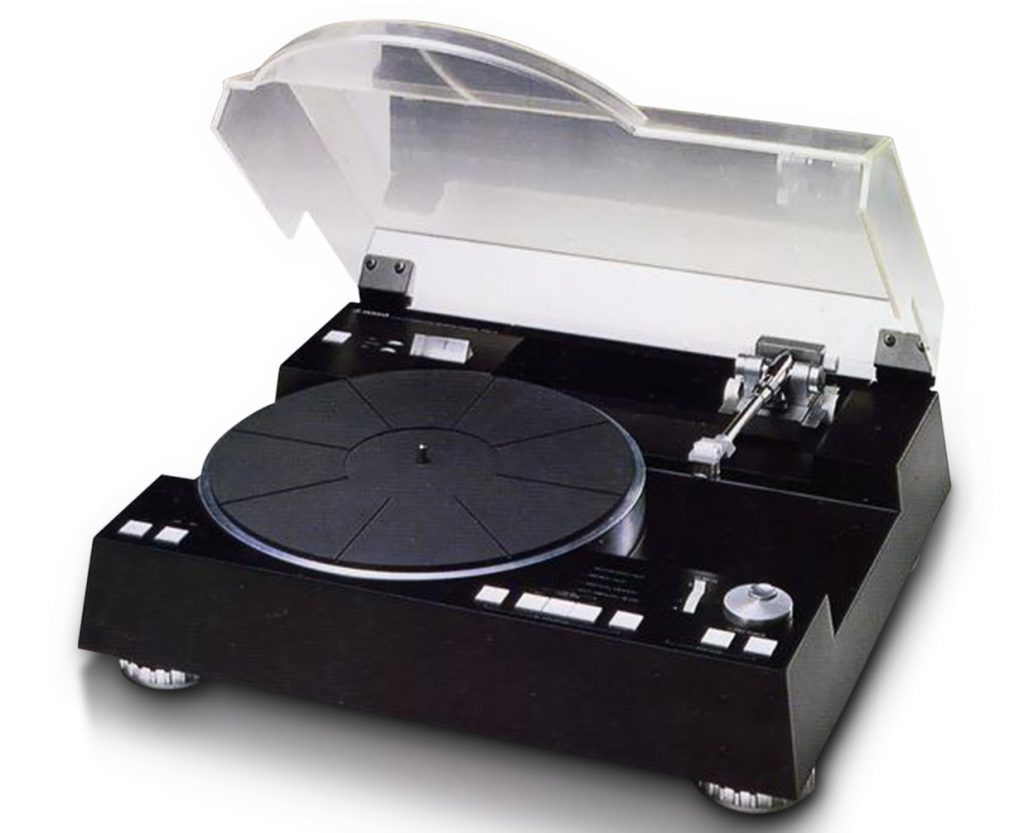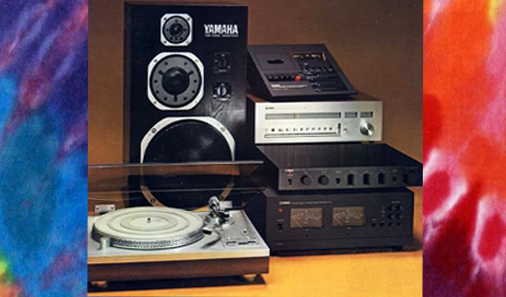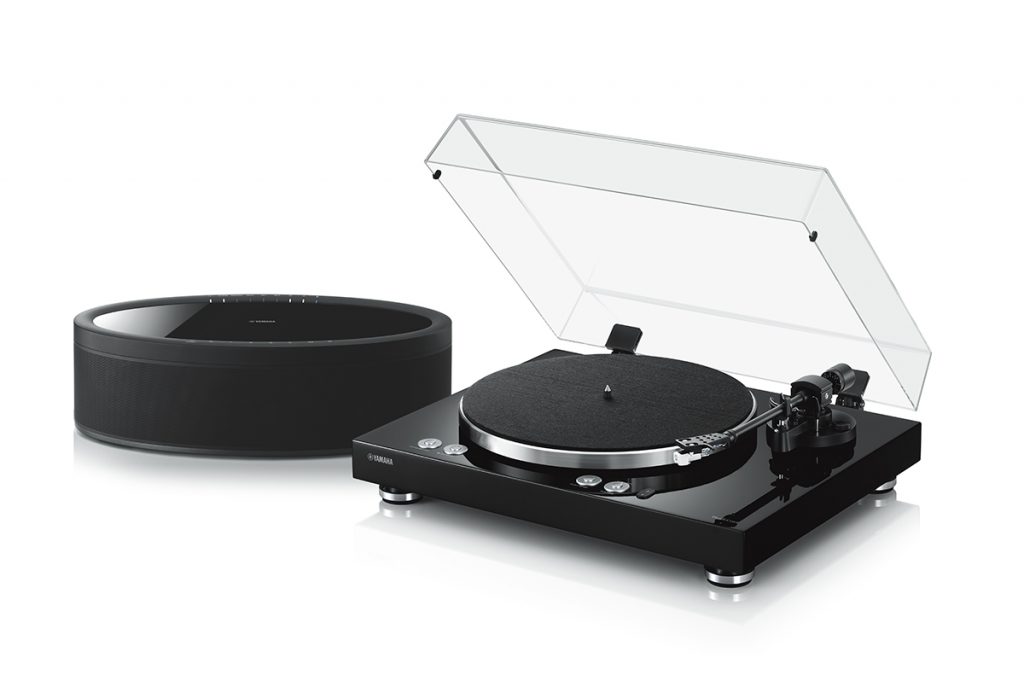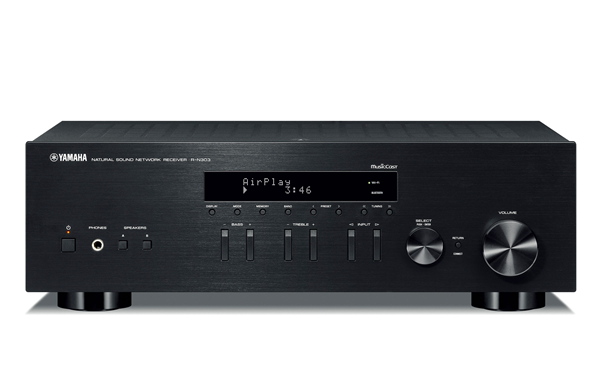The History of Yamaha AV Receivers
From humble beginnings to state-of-the-art.
The AV (audio visual) receiver is central to any home theater experience. Unlike its cousin, the 2-channel stereo receiver — which has seen steady but mostly incremental upgrades over the years — the AVR has had a number of revolutionary jumps in technology and usability in its relatively short 30-year existence.
Let’s take a look at the evolution of this crucial piece of home theater gear.
Early Days
In the mid-1980s, broadcast television began implementing standards to enhance their programming with stereo sound. If you were an early adopter, you could buy yourself a new CRT (cathode-ray tube) TV with stereo decoding capabilities that was best enjoyed when connected to your home audio system for sound reinforcement. At the time, the opening scenes of Miami Vice were a truly cutting-edge experience. Laser discs and Hi-Fi VCRs were available for the audio-video hobbyist, but stereo TV broadcasts were the catalyst for the growth and adoption of home theater by the general public.
Enter Surround Sound
Because Dolby® Surround was compatible with these stereo TV broadcasts, it didn’t take long for surround sound hardware to begin showing up in Hi-Fi stores (and, eventually, living rooms) around the country. The first surround sound decoders of the late 1980s and 1990 were mostly integrated amplifiers, albeit without the extensive capabilities of today’s AV receivers.
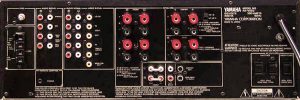
In 1991 Yamaha began shipping RX-V850 and RX-V1050 receivers. These were built around a digital surround decoder integrated circuit (the YSS203) developed by Yamaha. Other Dolby Pro Logic® decoders of the era were using analog circuitry with mediocre separation and “steering” (real-time signal routing) between the left, center, right and surround channels. The YSS203 provided digitally controlled steering for improved surround sound realism.
Back then, the two rear speakers were mono and there was no subwoofer track, so by today’s nomenclature these systems were 4.0. (Stereo rear channels and the .1, or LFE [low-frequency effects] dedicated track arrived on the scene much later with Dolby Digital®.) In addition, the Dolby Pro Logic bandwidth specification for the rear channel was only 100 Hz to 12 kHz, so receivers of the era typically only needed 20 or 30 watts of power for the rear speakers.
The Dolby Pro Logic Enhanced surround mode (first introduced in the Yamaha RX-V850) provided enveloping DSP processing for directional sound placement, making your living room sound more like a movie theater. This was the early predecessor to today’s CINEMA DSP™ and Surround:AI™ — two groundbreaking Yamaha technologies.
CINEMA DSP
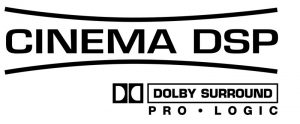
In 1993, the RX-V870 became the first Yamaha receiver to utilize CINEMA DSP, which added a newly refined soundfield process to Dolby Pro Logic Enhanced mode. The RX-V870’s 70-mm Mode produced a much larger surround presentation within the home, aiming to replicate the experience of a premium movie theater.
At the time, typical movie theaters used 35-mm film to project video onto the screen; larger 70-mm film stock and projectors, which provided a better viewing experience, were only used in premium theaters. These premium theaters also tended to have upgraded sound systems, in part because 70-mm film stock used a magnetic track on the side of the film, which produced much better audio than the two optical tracks used by 35-mm film.
Used in conjunction with Dolby Pro Logic, CINEMA DSP 70-mm Mode provided enhanced surround sound envelopment in consumer home theaters. The RX-V870 also included a greatly upgraded video switching system with the addition of five S-Video inputs to complement the five standard composite video inputs, which only supported 480i resolution.
Dolby Digital
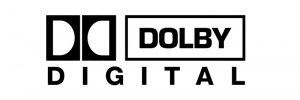
Dolby Digital was a technological breakthrough that gave movie mixing engineers the freedom to send helicopter sounds all around the room instead of just front to back. The RX-V992, introduced in 1997, was the first Yamaha receiver with built-in Dolby Digital decoding. It offered surround sound with 5.1 channels of discrete programming, as well as full-range 20 Hz – 20 kHz frequency response for each main channel and a full 80 watts of power to all five main channels, including the rear speakers.
YPAO™
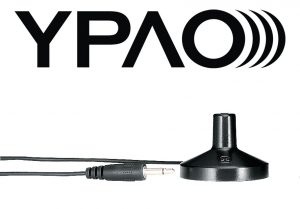
AV receiver calibration used to be a manual process in which you used the receiver’s remote control to cycle pink noise to one channel at a time, adjusting the volume and delay of each speaker accordingly. Essentially, this was simply a wild guess of what sounded best.
By the 1990s, the number of discrete channels offered by AV receivers grew from 4.0 to 7.1, and automated room calibration became critical. The timing, balance and equalization of so many speakers in a small room required some serious signal processing. Enter Yamaha Parametric room Acoustic Optimizer (YPAO for short), first introduced in 2003 and now a staple of all current Yamaha AV receivers. With this technological breakthrough, you can be sure you are getting the maximum performance out of your system. Just plug in the microphone and let YPAO do the rest!
HDMI®
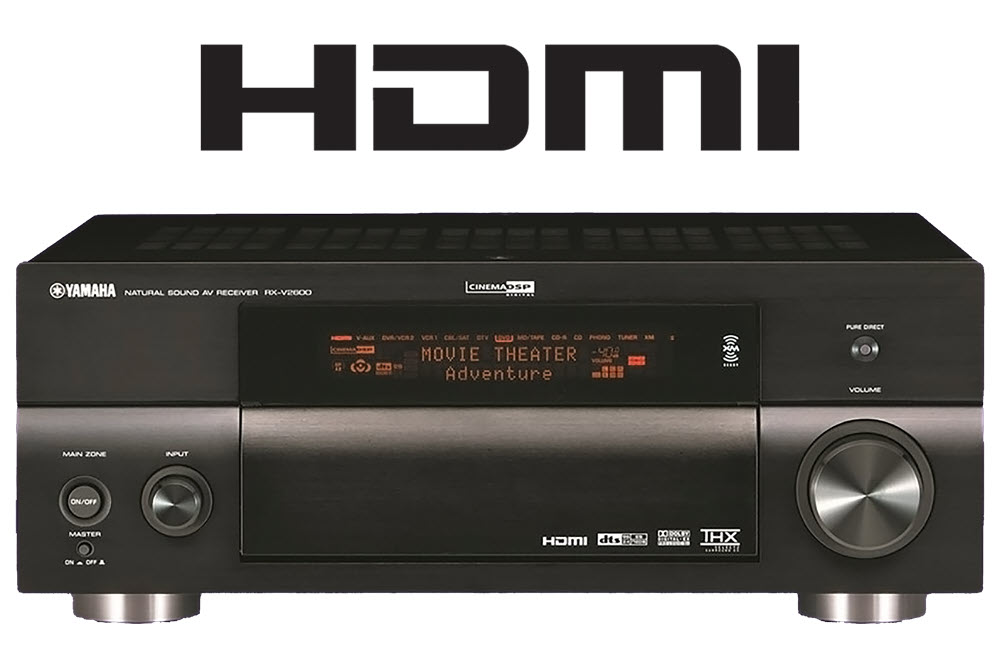
When it was first being developed in the early 2000s, HDMI (High-Definition Multimedia Interface) was intended to be the digital replacement for analog video standards, but it soon grew to become much more. For example, digital HD video switching was added with the introduction of HDMI version 1.1. Since most of the video sources at the time were still analog (composite, S-Video and component video), video up-conversion to HDMI was added to the signal flow. The Yamaha RX-V2600 AV receiver (which debuted in 2005) could up-convert analog 480i signals all the way up to 1080i or 720p. Although not up to today’s video standards, it was a good forerunner to the kind of advanced upsampling available in current AV receivers.
The Shift to Separate Components
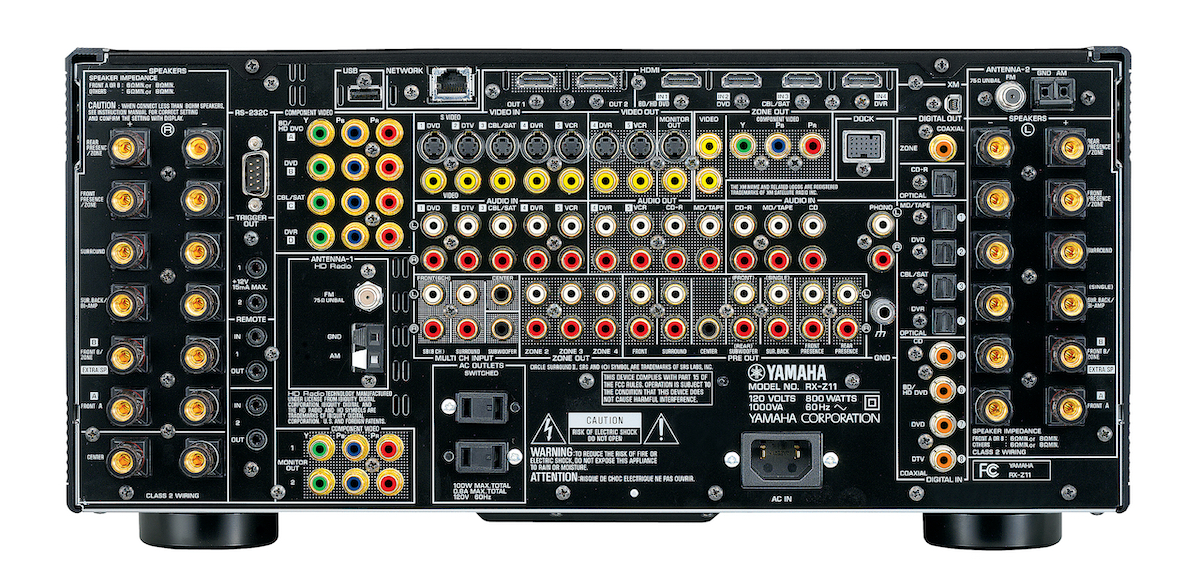
The RX-Z11, introduced in 2007, was the last of the renowned Z-series Yamaha AV receivers. At over 74 lbs., everything about this receiver said BIG! This was also one of the last Yamaha receivers to be THX®-certified.
The market conditions after 2008 pulled the rug out from under über high-end AV receivers, with a shift to separate components such as the Yamaha CX-5000 preamplifier and MX-5000 amplifier introduced in 2013. AV receivers at that time focused on the everyday performance needs of the home theater enthusiast: more channels, multi-room capability, video switching and processing and, of course, state-of-the-art surround sound capabilities.
AVENTAGE
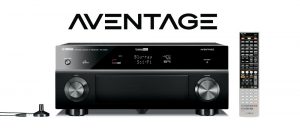
By 2010, the stage was set for a new era of AVRs. Incremental improvements to receivers, while effective up until this point, were beginning to create engineering challenges. After all, you can only add so many room additions to a home before it comes time to buy a new plot of land and start from scratch. Yamaha devoted two years to developing a line of receivers by rethinking, well, everything. From chassis design to circuit layout, grounding techniques and electronic component selection, the entire design and engineering process was reset. Thus was born the AVENTAGE line of receivers, delivered on the promise of a fresh start with unlimited potential.
Dolby Atmos® , DTS:X™ and MusicCast
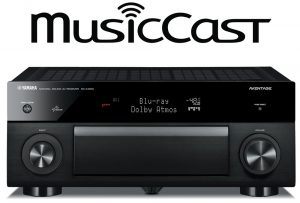
In 2015 there were even more surround sound breakthroughs. Dolby Atmos 3D surround sound — the same technology used in movie theaters — became available for home use, as did DTS:X. Object-based sound placement technologies like these, in combination with in-ceiling speakers, offered complete directional envelopment in your home theater.
In addition, Yamaha MusicCast multi-room technology brought the world of streaming music and whole-home audio to AV receivers. Selecting music and sharing content with other MusicCast devices in the home, all under the control of a simple free app, was a listening breakthrough; all your audio content could be played in any room of the home … even out on the patio or in your backyard! Later firmware updates gave MusicCast products voice control via Alexa and Google Assistant™ .
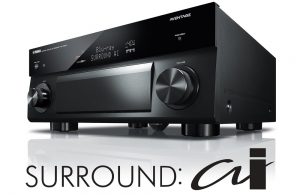
The latest Yamaha AV receivers can not only decode up to 9.1 channels of Dolby Atmos and DTS:X object-based surround sound, they can now enhance the home theater experience with Surround:AI. This proprietary Yamaha technology utilizes onboard artificial intelligence to analyze all the decoded channels five times per second and applies the optimal CINEMA DSP processing to every channel. With Surround:AI, you’re no longer confined to the small listening area of your home theater. It’s as if your speakers and room boundaries disappear, transporting you from a listener to a participant in the surround sound experience.
Things have come a long way since the first AV receivers were introduced 30 years ago. New technologies in surround sound, video formats, room calibration systems, streaming services and multi-room capability have enabled the quantum leap in capability and performance that make today’s audio-video receiver the centerpiece of home entertainment. And as new technologies emerge, rest assured that the AV receiver will continue to provide you with the most exciting home audio and video experience available.
Check out these related blog articles:
Click here for more information about Yamaha AV receivers.










